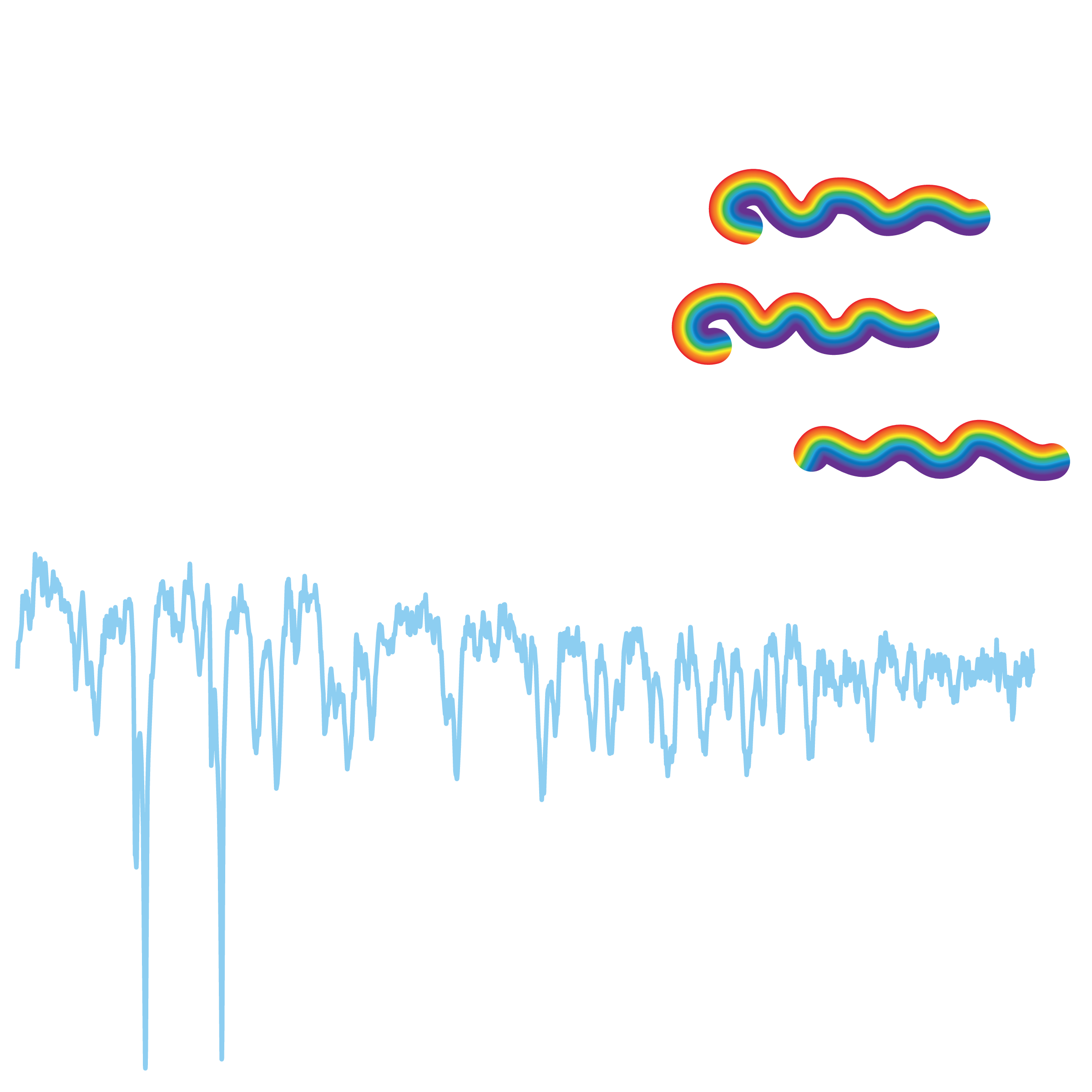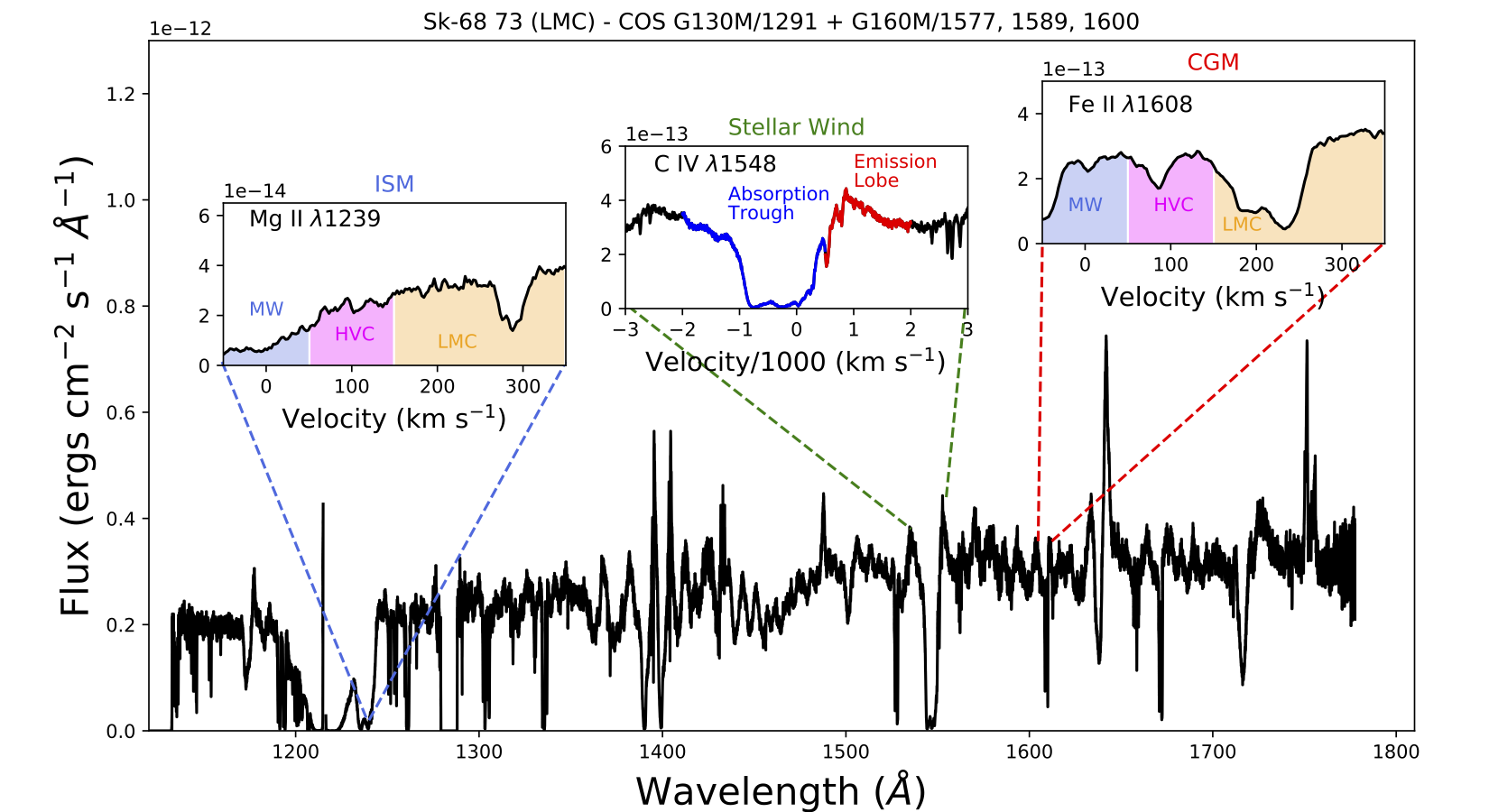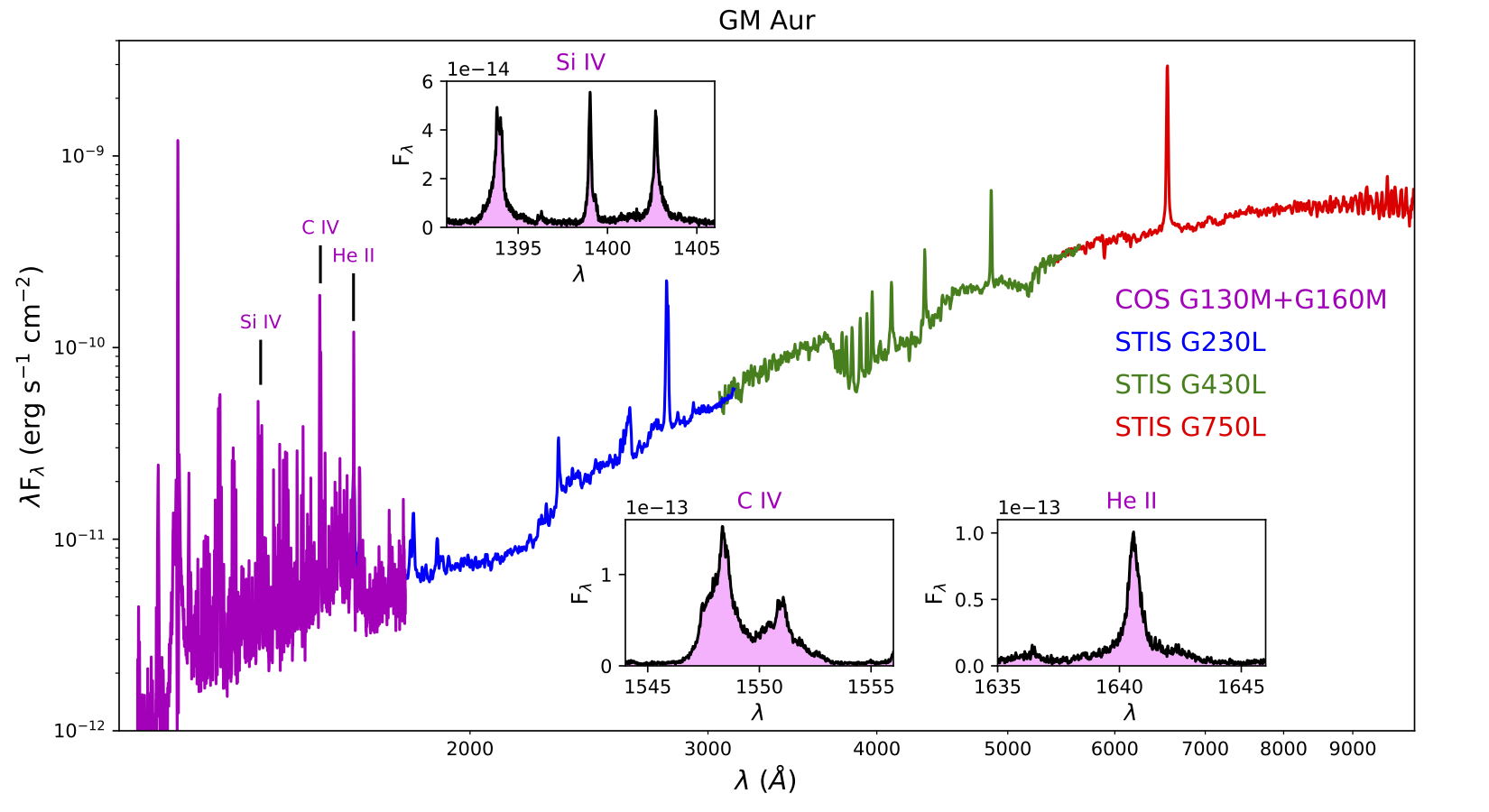
ULLYSES
Hubble UV Legacy Library of Young Stars as Essential Standards

Hubble UV Legacy Library of Young Stars as Essential Standards
Program
The Hubble Space Telescope’s (HST) Ultraviolet Legacy Library of Young Stars as Essential Standards (ULLYSES) program will devote approximately 1,000 HST orbits to the production of an ultraviolet spectroscopic library of young high- and low-mass stars in the local universe.
This Director’s Discretionary program has been designed to take advantage of HST’s unique UV capabilities, as both high- and low-mass stars feature different complex UV emission processes that strongly impact their surroundings, but are difficult to model. The UV emission from star formation is central to a wide range of vital astrophysical issues, ranging from cosmic reionization to the formation of planets.
The ULLYSES program will uniformly sample the fundamental astrophysical parameter space for each mass regime — including spectral type, luminosity class, and metallicity for massive OB stars (in the Magellanic Clouds and two other lower-metallicity nearby
galaxies) and the mass, age, and disk accretion rate for low-mass T Tauri stars (in eight young Galactic associations). The data will be gathered over a three-year period, from Cycle 27 through Cycle 29 (2020-2022).
The design and targets of these observations were determined in partnership with the astronomical community, allowing researchers from around the world to help develop the final program and to plan coordinated observations with other space- and ground-based telescopes.
Staff at the Space Telescope Science Institute (STScI), who are in charge of implementing this project, will generate public data sets and provide technical support to ensure that these data will enable, support, and stimulate a broad range of transformative research. The product of these collaborative efforts will be a unique UV legacy data set with lasting value.
The ULLYSES program will compile high-quality spectra, covering wide ranges in wavelength, for two broad categories of young stars: (1) far-UV and near-UV spectra of young, massive stars in several relatively nearby galaxies characterized by sub-solar metallicities, and (2) far-UV, near-UV, and optical spectra of young, low-mass stars in our own Galaxy. Roughly 500 HST orbits will be devoted to new observations of stars in each category. Those new spectra will be combined with suitable existing spectra (previously obtained with FUSE and/or HST) to form the full ULLYSES data set.
High-Mass Stars
The full ULLYSES sample of high-mass stars includes nearly 240 OB stars in the Large and Small Magellanic Clouds (50% and 20% solar metallicity, respectively) and six fainter stars in the more distant, even lower metallicity Local Group galaxies NGC 3109 and Sextans A (10-20% and 10% solar metallicity, respectively). Approximately 450 orbits will be devoted to new observations of more than 160 stars in the LMC and SMC; 50 orbits will be used for the six stars in Sextans A and NGC 3109. All luminosity classes will be observed for spectral types O2-B1.5, but only supergiants will be observed for types B2-B9. For the LMC and SMC, several stars will be included for each spectral type – luminosity class bin.
As detailed in Table 1, moderately high resolution spectra of the OB stars in the Magellanic Clouds will be obtained with selected wavelength settings of the COS G130M, COS G160M, STIS E140M, COS G185M, and/or STIS E230M gratings (see the example in Figure 1). The STIS settings offer somewhat higher spectral resolution, but COS has greater sensitivity. STIS will thus be used for the brighter stars, while COS will be used for the fainter stars that cannot be economically observed with STIS. Far-UV COS/G130M/1096 spectra will be obtained for stars where no usable FUSE spectra are available. The fainter massive stars in Sextans A and NGC 3109 will be observed at somewhat lower resolution with COS G140L/800. The desired signal-to-noise ratio values for each mode are listed in Table 1.
| Mode | Wavelength range (Å) | Resolution | Continuum S/N | Spectral Types |
|---|---|---|---|---|
| COS/G130M/1096 | 937 – 1,241 | 3,000 – 8,000 (Segment A) 5,000 – 12,000 (Segment B) | 20 at 1,080 Å | O2-O9 |
| COS/G130M/1291 | 1,132 – 1,436 | 12,000 – 16,000 | 30 at 1150 Å | O2-B9 |
| COS/G160M/1611 | 1,417 – 1,792 | 13,000 – 20,000 | 30 at 1,590 Å | O2-B9 |
| COS/G185M/1953 | (1,830 – 2,080) | 16,000 – 20,000 | 20 at 1,860 Å | B2-B9 |
| COS/G185M/1986 | (1,860 – 2,110) | 16,000 – 20,000 | 20 at 1,980 Å | B2-B9 |
| STIS/E140M/1425 | 1,141 – 1,729 | 45,800 | 20 at 1,200 Å | O2-B9 |
| STIS/E230M/1978 | 1,607 – 2,366 | 30,000 | 20 at 1,800 Å | O9-B9 |
| STIS/E230M/2707 | 2,275 – 3,119 | 30,000 | 20 at 2,800 Å | B5-B9 |
| COS/G140L/800 (Sextans A, NGC 3109) | 798 – 1,988 | 1,500 – 4,000 | 15 at 1,600 Å |

Figure 1: Example UV spectrum of the massive LMC star Sk-68 73, a BC2 Ia supergiant. The shortest FUV wavelengths will be covered by archival FUSE spectra or by new ULLYSES spectra using the COS/G130M/1096 setting. The longer FUV wavelengths will be covered by the STIS E140M or COS G130M+G160M gratings. The NUV wavelengths will be covered by STIS E230M or COS G185M.
Low-Mass Stars
The observations of low-mass stars will focus on 71 K- and M-type T Tauri stars and brown dwarfs in nine young Galactic associations, covering ranges in stellar mass, age, and accretion rate. These observations will include both a survey component (with single visits to 67 stars) and a monitoring component (with multiple visits to four prototypical T Tauri stars with well-known rotation periods and magnetic configurations). Approximately 400 orbits will be devoted to the 67 survey targets, and approximately 100 orbits will be allocated to the four monitoring targets.
| Mode | Wavelength range (Å) | Resolution | S/N |
|---|---|---|---|
| COS/G130M/1291 | 1,132 – 1,436 | 12,000 – 16,000 | 15 at N V λ1,239 |
| COS/G160M/1611 | 1,417 – 1,792 | 13,000 – 20,000 | 30 at C IV λ1,548 |
| STIS/G230L | 1,570 - 3,180 | 500 | 20 at Mg II λ2,800 |
| STIS/G430L | 2,900 - 5,700 | 500 | 20 at 4,000 Å |
| STIS/G750L | 5,240 – 10,270 | 500 | 20 at 5,700 Å |
| COS/G230L/2635 | 2,435 – 2,834 | 2,100 – 3,900 | 20 at Mg II λ2,800 |
| COS/G230L/2950 | 1,650 – 2,050 + 2,750 – 3,150 | 2,100 – 3,900 | 20 at Mg II λ2,800 |

Figure 2: Example of the full spectral coverage that will be obtained for the 67 survey targets. The FUV part of the spectrum will be covered by COS G130M+G160M. The NUV, optical, and NIR parts of the spectra will be covered by STIS G230L, G430L, and G750L, respectively. The coverage for the four monitoring targets (not shown) will consist of COS G160M and G230L.
In addition to the new spectra obtained with HST, the full ULLYSES data set will incorporate both existing optical/UV spectra (e.g., from HST, FUSE, and ESO) and new observational data from several other ground- and space-based observatories. Many of the massive stars in the LMC and SMC samples, for example, already have far-UV (900-1160 Å) spectra from FUSE, and some also have far-UV and/or near-UV spectra obtained with HST modes similar to those adopted for ULLYSES. When combined, the new ULLYSES spectra and the archival FUSE and medium-resolution HST spectra will provide full UV spectral coverage (as described in Tables 1 and 2). Many of the ULLYSES massive-star targets also have archival optical/near-IR spectra from the ESO VLT (e.g., observed with UVES and/or GIRAFFE), and several groups in the community are planning to obtain new, similar optical/near-IR spectra for more of the ULLYSES targets.
While previous HST UV spectroscopy of low-mass T Tauri stars focused largely on the Taurus star-forming region, the ULLYSES T Tauri star observations intentionally target eight Galactic star-forming regions with sparse archival HST coverage, in order to significantly expand the UV spectroscopic sample of such objects. For a subset of the T Tauri stars in the ULLYSES survey sample, the new UV/optical observations will be scheduled to coincide with corresponding TESS observations. In addition, ground-based photometric monitoring before, during, and after the HST observations will track the accretion variability of the ULLYSES targets. For the four T Tauri stars that will be monitored with HST over time, community groups are planning near-simultaneous X-ray spectroscopy, optical/near-IR spectroscopy, and spectro-polarimetry (for magnetic mapping).
All data pertinent to the ULLYSES target sample, including data provided by the community, will be available from this website.

Charting young stars’ ultraviolet light with Hubble.
Space Telescope Science Institute3700 San Martin Dr. Baltimore, MD
Questions? Contact the STScI Help Desk